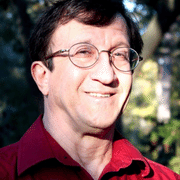Course name
Non-majors Biology (BIOL 1408)
- Inspark Offering: BioBeyond
- Discipline: Biology
- Teaching Mode: Blended
- Number of Students: Classes of 35
What He Needed
As each new term began, Professor Shmaefsky consistently noticed a significant loss of information and poor knowledge retention in students. He needed a way to reinforce content from previous courses and lessons without constantly reviewing the same information in class.
Trying personalized, adaptive courseware had been in the back of his mind, but he wanted to make sure the material provided an engaging experience. Another potential benefit of online courseware was cost; the majority of Shmaefsky’s students cannot afford to spend hundreds of dollars on textbooks. He needed to come up with a solution to avoid the expensive dollar amounts typically attached to biology courses.
Not to mention that students — and Shmaefsky himself — found common commercial textbooks dull and dry, which negatively impacted engagement. He wanted to increase student participation and interest a blend of better in-class and online materials.
His Solution
Professor Shmaefsky now supplements in-class content using Inspark’s BioBeyond course. After face-to-face class time, he assigns BioBeyond lessons as homework assignments. The courseware provides a lab-like learning experience, which students can work through at their own pace, getting hints and advice from the lesson that adapts to their individual needs and misconceptions. BioBeyond lessons easily mapped to his existing lesson plans, so he didn’t have to overhaul his curriculum to incorporate the online learning experiences.
Shmaefsky also successfully cut course costs by combining BioBeyond courseware with an open source textbook for reference. Now students spend one-third to one-quarter of what they would have spent before, without losing any quality of education.
“Once we got into the open source books we found that they were giving comparable, if not better, scores. Introducing Inspark’s BioBeyond added that extra element.”
Shmaefsky also actively monitors student progress and content mastery using the built-in Analytics. He checks which students are (or aren’t) completing work, and reviews their results to see if they understand the material. He can then modify upcoming lectures to spend time revisiting only the most difficult concepts.
The Results
BioBeyond has taught students more than previously possible by engaging them with cutting-edge learning technology. Simulations from the course give Shmaefsky’s students — many of whom have never left their home state before — the opportunity to explore and experience other locations around the globe, such as New York City, Yellowstone National Park, the Galapagos Islands, and even the deep sea ocean floor.
Using BioBeyond as homework assignments, Shmaefksy is promoting ‘learning by doing’, increasing student engagement and leading to more permanent knowledge acquisition. “Some students said once they started [BioBeyond], they couldn’t put it down,” said Shmaefsky. He has been able to use the video game-like activities to re-engage uninterested students in his introductory biology course.
Students also have been access to practice and develop critical thinking skills that are required to be successful throughout college — skills that are often under-developed before students enter higher education. The course teaches students to focus on the why behind science, instead of just the what.
“I know by looking at critical thinking activities, case studies, and test questions that students find it comparable or better than using just a textbook alone.”

